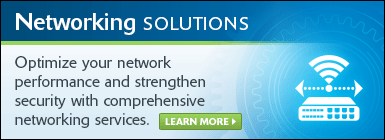Organizations that conduct much of their processes digitally recognize the importance of ensuring software and hardware are connected. Network device modules act as intermediaries between physical equipment and digital platforms, enabling seamless integration between the two.
What Are Network Device Modules?
In a nutshell, network device modules are pieces of hardware that facilitate communication among devices connected to a computer network. This is a broad category spanning subsets including:
Routers: This tech connects devices such as laptops to the Internet either via local area networks (LANs) that require physical cable connections or wireless LANs (Wi-Fi).
Repeaters: Although they’re not amplifiers, repeaters regenerate the same network’s signal to expand its coverage without weakening or corrupting the Internet connection.
Hubs: Because hubs have multiple ports, they function like repeaters but without wireless capability. Hubs send the same data to all connected devices... . There are three hub types:
- Active: Clean, boost, and relay signals throughout a network with their own power supply and wiring. They can extend distances between nodes.
- Passive: Collects power and wiring nodes from active hubs and relays signal without cleaning or magnifying it. They can’t expand coverage.
- Intelligent: Like active hubs, they can scour and increase signals and can do this remotely.
Bridges: Rather than linking devices across a network physically, bridges connect them at the data link layer by reading the data’s source and destination. There are two types:
- Transparent: Stations in the network are unaware of the bridge’s existence.
- Source routing: Source stations specify routing operations.
Switches: These act as a combination of hubs and bridges, having numerous ports and operating at the data link layer. They check data for errors before relaying it between devices.
Gateway: Not to be confused with bridges, gateways can connect two separate networks by taking data from one system, interpreting it and sending it to another.
Modems: This tech converts digital signals into analog ones for devices that need to use telephone lines via broadband. The receiving modem converts the data back to digital.
Access points: These function the same way as routers, except they have their own antenna, transmitters, and adapters. They can connect wired and wireless devices.
Without proper and effective hardware and software integration, your organization runs the risk of coming to a connectivity standstill, resulting in costly downtime. Fortunately, Connection has a vast array of network device modules to keep your business up and running, and we’re well-positioned to advise you about which models will best serve your needs.


















